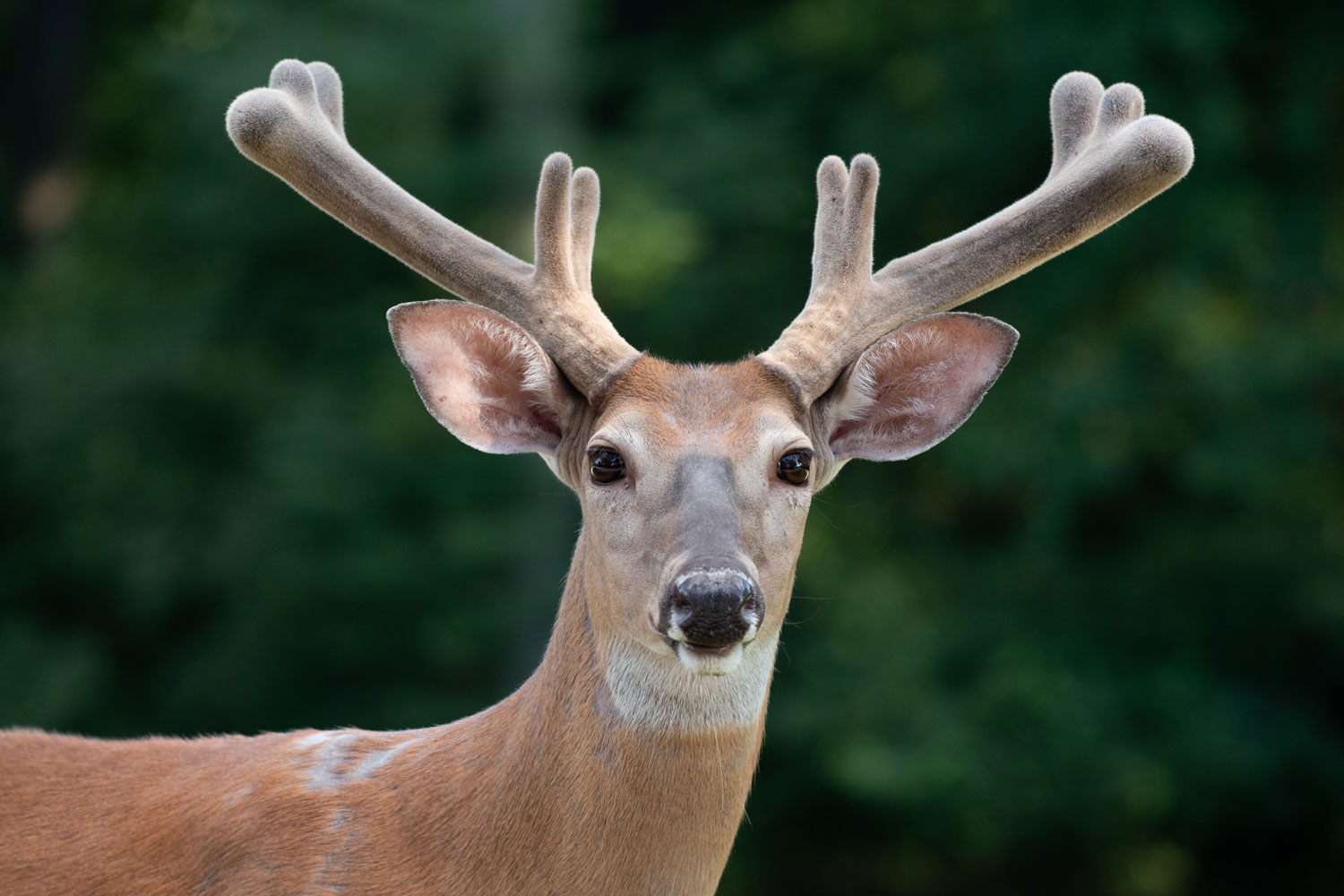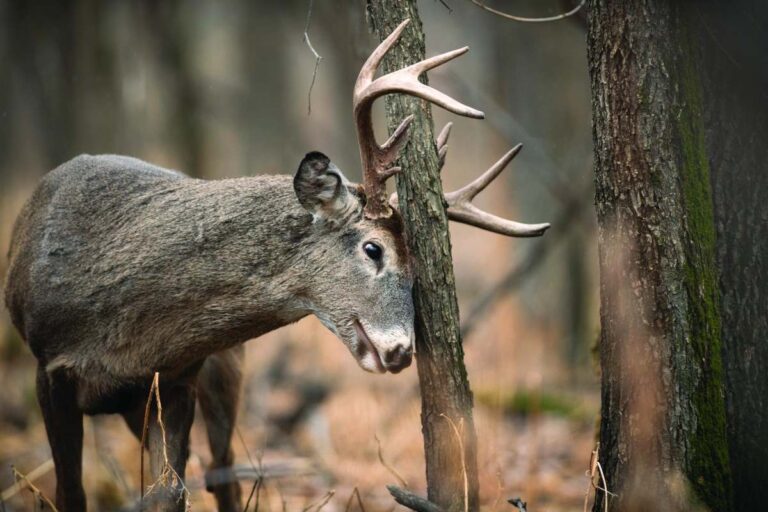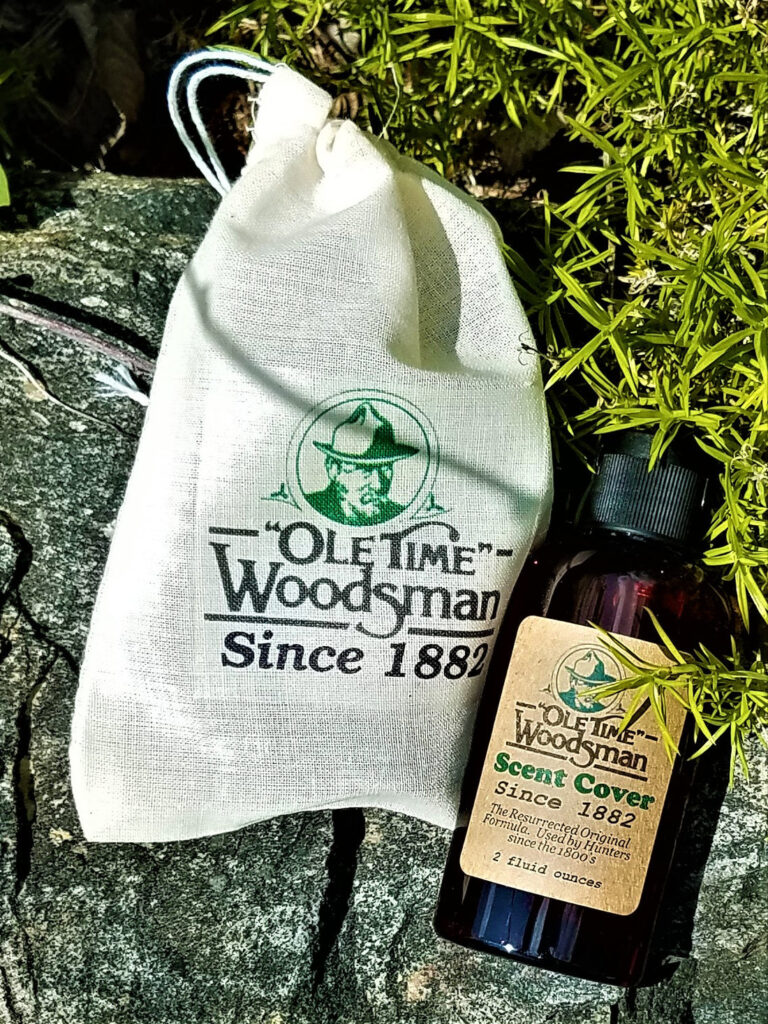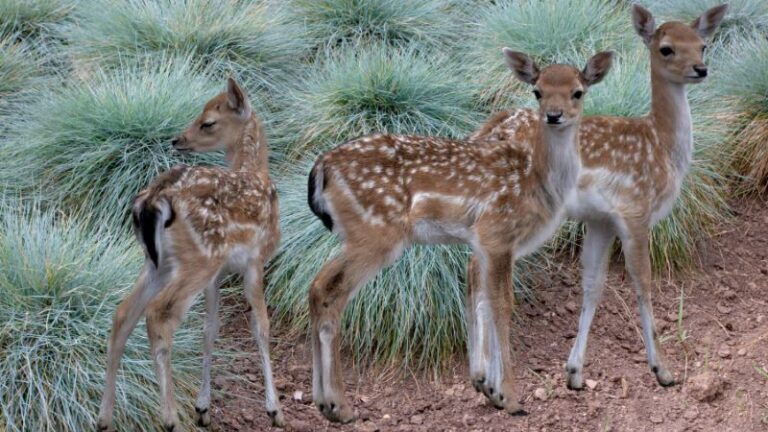Do Deer Antlers Grow Back
Yes, deer antlers grow back every year after shedding. The regrowth of antlers can take between two to four months.
Deer shed their antlers annually after the mating season, embarking on a remarkable natural process that fascinates wildlife enthusiasts and hunters alike. This cyclic shedding ensures that deer can regenerate healthier, often larger antlers as part of their biological rhythm.
The regrowth phase is also called ‘antlerogenesis,’ a period during which the antlers are rich in blood vessels and covered in a soft skin called ‘velvet’. Antlers are unique to the deer family, and their ability to regrow them is a prime example of nature’s adaptability and regeneration. Hunters and naturalists often use the size and form of antlers to gauge a deer’s age and health, making these structures a significant aspect of deer biology and ecology.
Deer Antler Regeneration
The natural world is full of wondrous cycles, and perhaps one of the most remarkable of these is the degeneration and regeneration of deer antlers. Unlike other mammalian appendages, deer antlers are shed and regrown on an annual basis. Understanding this unique process not only fascinates wildlife enthusiasts but also provides crucial insights into the health and vitality of deer populations. Let’s explore the various aspects of how deer antlers return anew each year.
Importance Of Understanding Antler Growth
Comprehension of antler growth has significant implications for wildlife management, conservation efforts, and even the hunting community. Documenting antler cycle patterns assists in determining the age, health, and breeding capabilities of deer. As the antlers are composed of bone, the growth process offers clues to a deer’s nutritional intake and overall well-being. Additionally, this knowledge helps in evaluating the impact of environmental changes on the species.
- Aids wildlife management and conservation: By tracking antler growth, experts can make better-informed decisions about herd management and protection measures.
- Valuable to hunters: Hunters often use antler size and structure as a tool for selective hunting, which can influence the genetic pool and health of deer populations.
- Indicative of habitat quality: The condition of antlers can reflect the quality of the habitat, including the availability of nutrition necessary for optimal growth.
Deer Antler Regeneration Process
Antler regeneration is a fascinating and complex process that begin shortly after the old antlers are shed. Growth starts at the pedicels, the bony structures from which antlers develop. Driven by a surge in testosterone levels, a velvet-like skin rich in blood vessels and nerves envelops the developing antlers to supply essential nutrients.
- Shedding of the old antlers occurs usually in late winter to spring, depending on the species and geographical location.
- New antler growth is noticeable within a few weeks, covered in a soft layer called velvet.
- Throughout the spring and summer, antlers will continue to grow at an astonishing rate, one of the fastest tissue growth rates among animals.
- By late summer or early fall, the antlers fully ossify, and the deer will rub off the velvet on trees and bushes, revealing the hard bone beneath.
- The cycle repeats annually, with the size and complexity of the antlers often increasing with the age of the deer.
Factors Contributing To The Size And Health Of Regrown Antlers
| Factor | Impact on Antler Growth |
|---|---|
| Nutrition | Adequate levels of minerals and vitamins, especially calcium, phosphorus, and vitamin D, are critical for robust antler development. |
| Genetics | Hereditary traits can influence the size and shape of the antlers. |
| Age | Mature deer tend to grow larger and more branched antlers as compared to younger ones. |
| Health | Good overall health and absence of diseases or injuries ensure better growth. |
| Hormonal Balance | Optimal levels of testosterone and other hormones are essential for the antler regrowth cycle. |
Deer Antler Growth Process
The Deer Antler Growth Process is a fascinating biological phenomenon that exemplifies nature’s cyclical and rejuvenating processes. Deer are unique among mammals in that they are capable of growing a completely new set of antlers each year. This process, tied closely to their reproductive cycle and governed by ecological factors, is both intricate and dynamic. Understanding how deer antlers develop and regenerate is not only interesting for wildlife enthusiasts, but essential knowledge for hunters and conservationists alike.
Annual Shedding Of Deer Antlers
As a crucial phase in the life cycle of male deer, the annual shedding of their antlers marks a natural end to the mating season and sets the stage for new growth. After testosterone levels drop at the end of the breeding period, antlers loosen and eventually fall off. This shedding typically occurs between December and March, depending on geographic location and species. Factors such as age and health can also influence the timing of antler shedding. The shedding process is generally quick; antlers can be cast in as little as 24 to 48 hours, allowing deer to move on to the next phase of antler development.
Growth Cycle Of Deer Antlers
The regrowth of deer antlers is an annual cycle, starting soon after the old antlers are shed. Initiating the new antler cycle, a soft layer of highly vascular skin known as velvet envelops the emerging antler nubs. This protective covering supplies nutrients and oxygen to the developing antlers via an extensive network of blood vessels. As antlers grow, they are composed of a soft tissue that progressively calcifies until it hardens into bone.
The stages of the antler growth cycle include:
- Regeneration Phase: This is when new antlers begin to grow from the pedicles, the bony structures that support the antlers on the skull.
- Rapid Growth Phase: Following regeneration, antlers grow quickly, often up to half an inch per day during peak development.
- Mineralization and Hardening: By late summer, the blood flow to the velvet decreases, causing the velvet to dry up and peel away. The antlers then fully mineralize and harden.
This growth cycle is influenced by a combination of hormonal changes and day length, known as photoperiod. Age, nutrition, and overall health also play critical roles in the size and formation of the antlers. By understanding the growth cycle of deer antlers, wildlife observers can better predict and appreciate the seasonal changes that occur within deer populations. Such knowledge contributes to effective wildlife management and conservation practices.
Factors Affecting Antler Regeneration
Understanding the marvel of antler regeneration in deer can be as fascinating as it is complex. Every year, deer shed their antlers, only to grow a new set. This remarkable process is influenced by multiple factors, each playing a crucial role in the growth and renewal of antlers. Let’s delve into some of the primary contributors to antler regeneration.
Hormonal Influence On Antler Growth
Antler growth is predominantly governed by hormonal changes within a deer’s body. As the seasons shift, fluctuating levels of testosterone trigger the shedding and regrowth of antlers. After the old antlers are shed, a surge in growth hormones, such as Insulin-like Growth Factor (IGF), sets the stage for the new antlers to form. Low testosterone levels during late winter and spring promote the initial growth phase, while increasing levels in late summer signal for the antler hardening and eventual shedding process. Understanding these hormonal patterns is critical for wildlife enthusiasts and game managers alike, offering insight into not only antler growth cycles but also the overall health and breeding status of the herd.
Nutritional Requirements For Antler Regeneration
For antlers to fully regenerate, proper nutrition is non-negotiable. Deer require a diet rich in:
- Proteins – Essential for the rapid cell growth needed in antler development.
- Minerals – Particularly calcium and phosphorus, which make up a significant portion of antler composition.
- Vitamins – Vitamins A, E, and D are especially crucial. Vitamin A for epithelium growth, Vitamin E for prevention against oxidative damage during the rapid growth phase, and Vitamin D for calcium absorption.
Implications For Wildlife Management
The regrowth of deer antlers is a fascinating biological process with significant implications for wildlife management practices. Understanding how and why deer antlers grow back is crucial for maintaining healthy deer populations and ecosystems. Let’s delve into the impacts of antler harvesting on populations and the role of antlers in deer behavior.
Impact Of Antler Harvesting On Deer Populations
Antler harvesting, the collection of shed or harvested antlers, is a practice that often garners interest from different sectors, including wildlife enthusiasts, hunters, and craftspersons. The implications of this activity on deer populations are multifaceted:
- Sustainable Practice: Fortunately, because deer antlers are naturally shed annually, collecting them does not inherently harm the deer, making it a sustainable practice under regulated conditions.
- Monitoring Health: Analysis of collected antlers can provide valuable data on the health and nutrition of the deer population, informing management strategies.
- Illegal Trade Concerns: Unregulated trade of antlers can lead to illegal poaching; thus, wildlife management must enforce proper measures to prevent such activities.
Role Of Antlers In Deer Behavior And Social Structure
Antlers are not merely ornamental features of deer; they play a critical role in social hierarchies and mating practices. The implications for wildlife management in understanding these dynamics are profound:
- Antlers serve as a display of dominance, impacting mating success and social ranking among males.
- The size and strength of antlers can influence a buck’s ability to secure territory and mates, reflecting his health and vitality.
- Wildlife managers must factor in the ecological and behavioral significance of antlers when implementing management programs, such as controlled hunts or habitat conservation efforts.
By recognizing the importance of antlers in the natural life cycle of deer, wildlife authorities can better assess the impact of human activities on deer populations and take steps to promote sustainable practices that support the well-being and balance of ecosystems.
Human Applications And Ethical Considerations
Nature’s cycle showcases remarkable phenomena, one of which is the regrowth of deer antlers annually. This unique natural process has not only sparked interest in the scientific community but also holds significance in human culture and medicine. Deer antlers have been integral to traditional healing practices for centuries, providing an array of purported health benefits. With such practices comes a responsibility to ensure ethical standards in the collection and trade of these natural resources. This section delves into the use of deer antlers in traditional medicine and the ethical considerations that must be adhered to in this pursuit.
Use Of Deer Antlers In Traditional Medicine
Traditional medicine systems, such as those in China and Korea, have a long history of incorporating deer antlers into remedies. Known as ‘lu rong’ in Chinese, the velvet antlers are harvested for their rich composition of amino acids, minerals, and growth factors. They are typically used in:
- Improving bone health
- Boosting strength and endurance
- Enhancing immune system function
- Promoting recovery from injuries
These applications are premised on the idea that the growth factors in antlers, which contribute to their rapid regeneration, could confer similar benefits to human health.
Ethical Considerations In Antler Collection And Trade
While the health benefits associated with deer antler use in traditional medicine can be substantial, ethical implications of antler collection are equally important. Animal welfare concerns arise from methods of antler harvesting, especially when it comes to the well-being of deer during the process. Ethical collection should ensure that:
- Antlers are gathered after natural shedding, ensuring no harm comes to the deer.
- Deer populations are monitored to prevent overharvesting and to support sustainable practices.
- Trade regulations are respected, particularly with regard to species that may be threatened or protected.
Stakeholders in the trade and use of deer antlers, including suppliers, practitioners, and consumers, need to prioritize ethical considerations over economic gain. Preservation of wildlife and their habitats must trump commerce, ensuring that future generations may continue to benefit from both the health applications and the ecological beauty of deer antlers.
Conclusion And Future Research
As we explore the regenerative capabilities of deer antlers, a phenomenon of both biological wonder and ecological importance, we reach the intersection of current knowledge and the vast potential for future discovery. The science behind antler growth encapsulates a remarkable natural process, providing insights into regeneration that could one day inform medical science. Emphasizing the significance of this growth mechanism sets a robust foundation for the quest for understanding.
Significance Of Understanding Antler Regeneration
Deer antler regeneration offers a stunning example of rapid tissue growth and renewal in mammals. The annual cycle of shedding and regrowing antlers underscores the remarkable adaptability and resilience of deer species. Unraveling the specifics behind this process:
- Contributes to wildlife management and conservation efforts, ensuring healthy deer populations and balanced ecosystems.
- Promises to enhance biomedical research, particularly in the fields of limb regeneration and wound healing.
- Sheds light on the genetic and hormonal pathways that govern tissue growth, introducing new angles for scientific inquiry.
Potential For Further Study On Deer Antler Growth
The vast potential for further research into deer antler growth presents numerous avenues for scientific inquiry:
| Area of Study | Potential Impact |
|---|---|
| Genetic Mechanisms | Clarification of the gene expression and regulation during antler growth could revolutionize tissue regeneration therapies. |
| Cellular Biology | Understanding cell-level processes can lead to groundbreaking advances in regenerative medicine and prosthetic development. |
| Ecological Impact | Insight into how antler growth affects a deer’s life and ecosystem could inform better conservation strategies. |
Continued interdisciplinary research is essential. By integrating genetics, molecular biology, and ecology, scientists can unlock the mysteries of antler regeneration, leading to innovations that transcend the depths of the forest and potentially improve human lives.
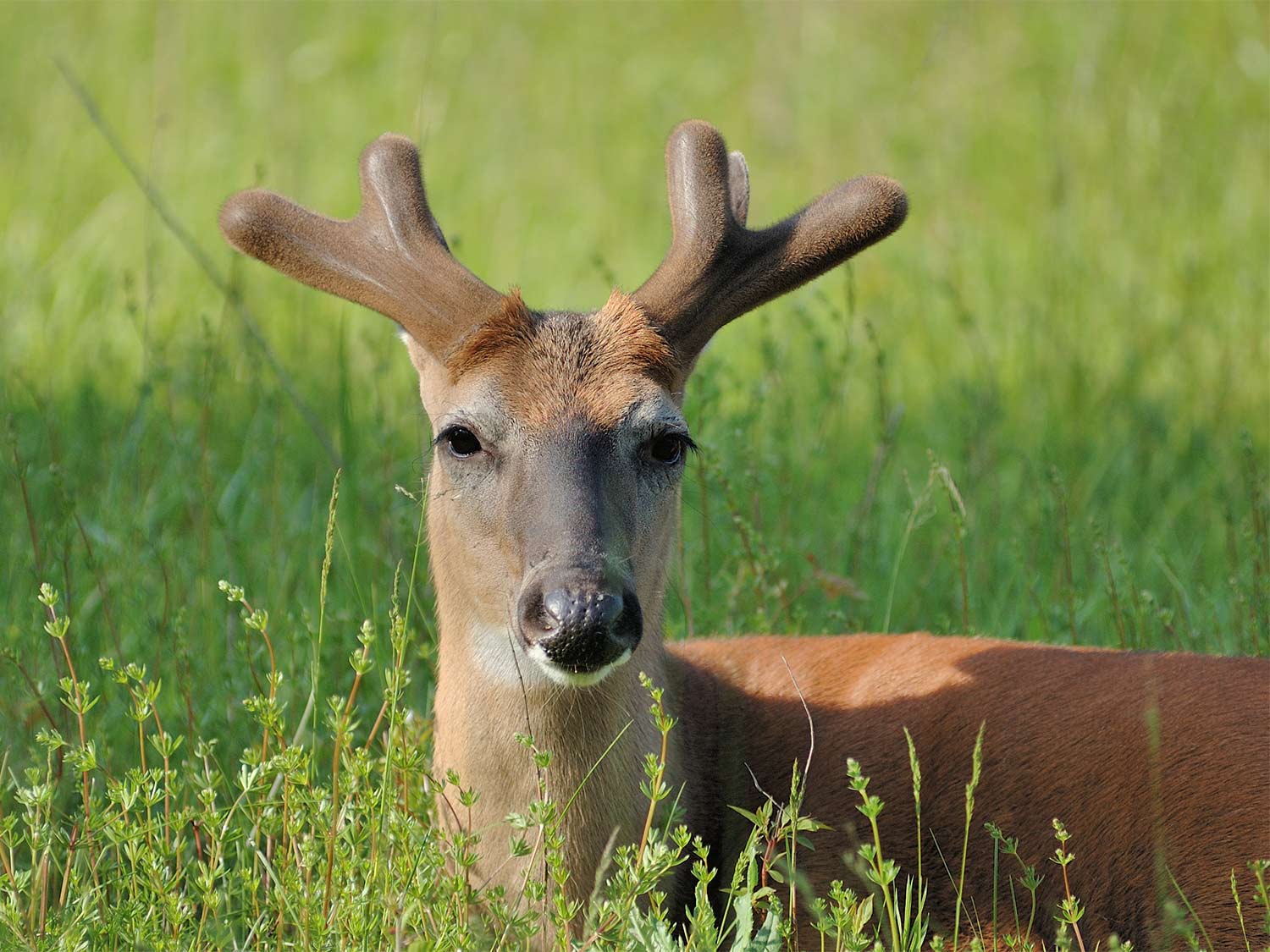
Credit: www.outdoorlife.com
Frequently Asked Questions Of Do Deer Antlers Grow Back
Do Deer Antlers Regrow Every Year?
Deer antlers are remarkable in that they are shed and completely regrow each year. This cycle is linked to seasonal changes and the animal’s hormonal fluctuations.
What Determines The Size Of Regrown Antlers?
The size of a deer’s new antlers is influenced by factors including age, nutrition, and genetics. Older deer with better nutrition often grow larger antlers.
Can Antlers Regrow After Being Damaged?
If a deer’s antlers are damaged during the growth phase, they can regrow to some extent. However, the regrowth may result in abnormal antler shapes.
How Long Does It Take For Antlers To Grow Back?
Antler regrowth can take between 3 to 5 months. This process usually begins in spring and continues into late summer, culminating in a full set of antlers.
Conclusion
Understanding the regenerative miracle of deer antlers has its fascinations. Each year, deer showcase nature’s capacity for renewal. With proper habitats and healthy deer populations, antler growth is a cycle we can witness regularly. Embrace the wonder and respect these majestic creatures as their antlers rise anew.
